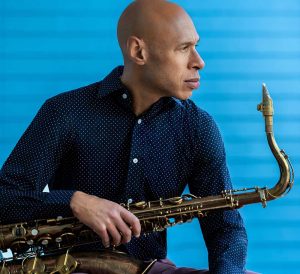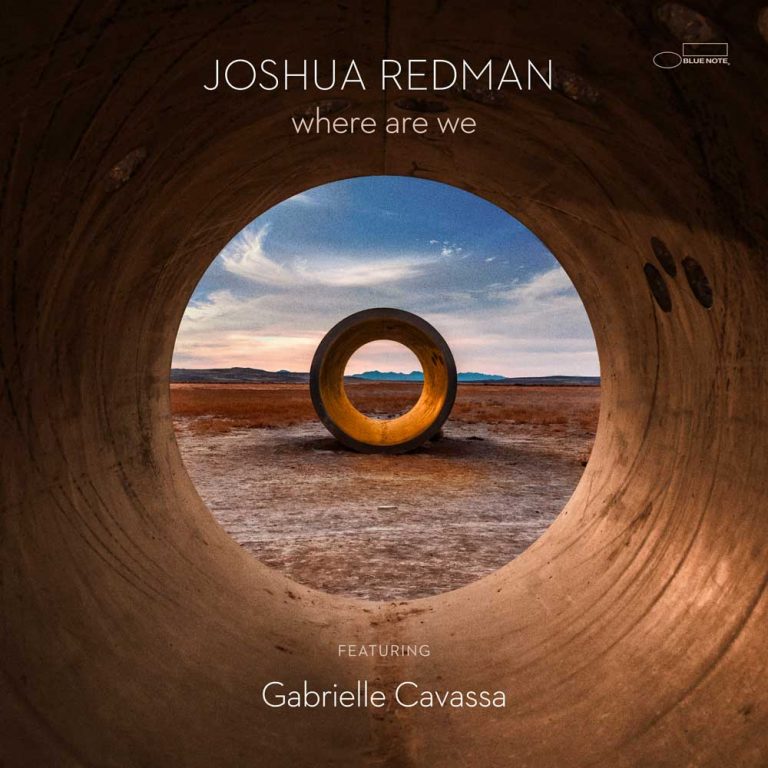“If I could sing, I would.” Joshua Redman flashes a smile. “I think the human voice is the most beautiful instrument in the world. So I try to sing through the saxophone by taking the primary melodic voice and guiding the most explicit parts of the narrative.”
It’s a role that the Berkeley, California-based Redman, 54, relishes whatever the format; variety, for him, means inspiration. Since bursting into view in 1993 with “Redman”, the Grammy-nominated solo debut he released after winning the Thelonious Monk International Jazz Saxophone Competition in 1991, Redman has gigged and recorded as a leader or co-leader in solo, duo, trio (and double trio), quartet and quintet settings, his golden tones and sinuous darting lines becoming the principal character in the story.
Working with different combinations of musicians – pianist Brad Mehldau, bassist Christian McBride, guitarist Pat Metheny and in recent years, Minneapolis’s The Bad Plus – has fed his imagination, kept his fingers nimble. He has constancy, too, in his longtime bands James Farm and Still Dreaming, whose respective members’ telepathic exchanges underscore a commitment to bringing out the best in the music.

“As a saxophonist I can never be part of the rhythm section”, says Redman, the son of late jazz saxophonist Dewey Redman, whose free, folky Old and New Dreams quartet (with whose alumni Joshua has played) remain the stuff of legend. “I’ve often wished that I could be more integrated into the supportive fabric of the music. So I guess this album has been a long time coming.”
Welcome, then, “where are we”, Redman’s debut for Blue Note, and his first ever album to feature a vocalist: Gabrielle Cavassa, a rising star whose intimate, Holiday-esque style is clearly influenced by jazz instrumentalists, and who sings on ten of the 13 tracks intended to serve as settings – as geographical locations – for a musical journey across the USA. Her chemistry with Redman is palpable.
“It was wonderful to play [tenor sax] with and around Gabrielle’s voice. Stepping to the side made my melodic strengths rise to the fore.” Another smile. “My lyrical playing is stronger than on any other record.”
It helps that he is accompanied by players the calibre of bassist Joe Sanders, erstwhile sideman in Kendrick Scott Oracle, pianist Aaron Parks (of the latter and James Farm) and the drummer Brian Blade (Still Dreaming), with whom Redman has worked since the 1990s. Their readings of covers including Bruce Springsteen’s “Streets of Philadelphia” and Jimmy Webb’s “By the Time I Get To Phoenix” feel fresh, nuanced, while mashups of Count Basie and James Rushing with Sufjan Stevens (“Chicago Blues”) and Redman with Douglas Cross and Thelonious Monk (“My Heart in San Francisco”) are as surprising as they are fitting.
Redman sets out his stall on opener “After Minneapolis (face toward mo[u]rning)”, which he says he felt compelled to write in the days following the murder of George Floyd in May 2020: “It’s the only song I’ve ever written in response to anything,” he says of “Minneapolis…”, which incorporates parts of Woody Guthrie’s iconic folk song “This Land Is Your Land”.
“It was something I felt I had to get out, and was just an instrumental song until we were planning this album, and I thought about putting some lyrics to it,” he continues. “There are aspects of this album that are celebratory of America and the American dream. But there are also aspects that are critical of the American reality and failings to live up to its ideals; John Coltrane’s ‘Alabama’ being an incredible example.”
Does he consider jazz the music of resistance? A pause. “I think some of the greatest jazz has that, but also transcends it. I never felt comfortable making an explicit political or social statement in my music. In order for me to be authentic and creative as a musician, I have to come to music on its own terms. So this
no images were found
isn’t one statement. It’s a series of juxtapositions and questions.”Each song on “where are we” therefore evokes a different mood, augmented here and there by guest artists – guitarists Pete Bernstein and Kurt Rosenwinkel, trumpeter Nicholas Payton, vibist Joel Ross – on tracks associated with their hometowns. Closing tune “Where Are You?”, originally written for the 1937 musical comedy film Top of the Town, is lent bossa nova sweetness by Cavassa, finishing the album in ways deceptively light and deeply thought-provoking.
“That song didn’t come immediately to mind because it doesn’t refer to a specific place. But it ended up being really special for the record.” Not the least because it inspired its title: “Which felt perfect as it has to do with the record emotionally and conceptually, but doesn’t make a clear assertion about anything.”
Neither is it rhetorical. “where are we” has meaning and relevance. It has a voice.
How we perceive it is up to us.
Jane Cornwell is an Australian-born, London-based writer on arts, travel and music for publications and platforms in the UK and Australia, including Songlines and Jazzwise. She’s the former jazz critic of the London Evening Standard.
Header image: Joshua Redman. Photo: Zack Smith.



